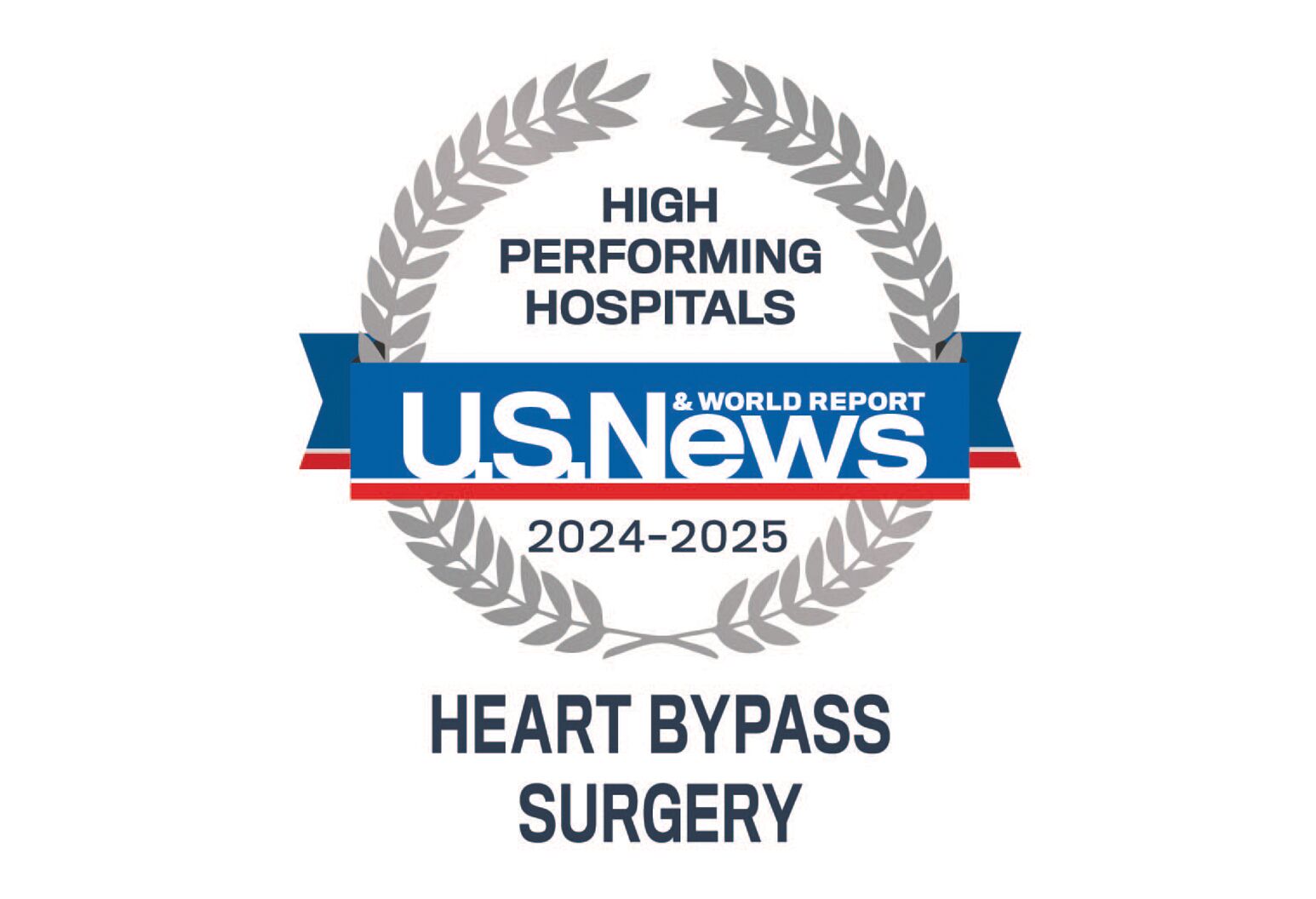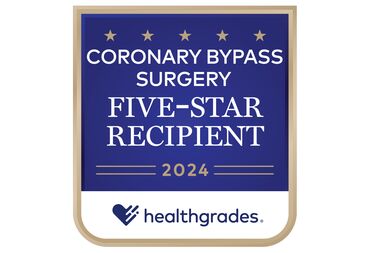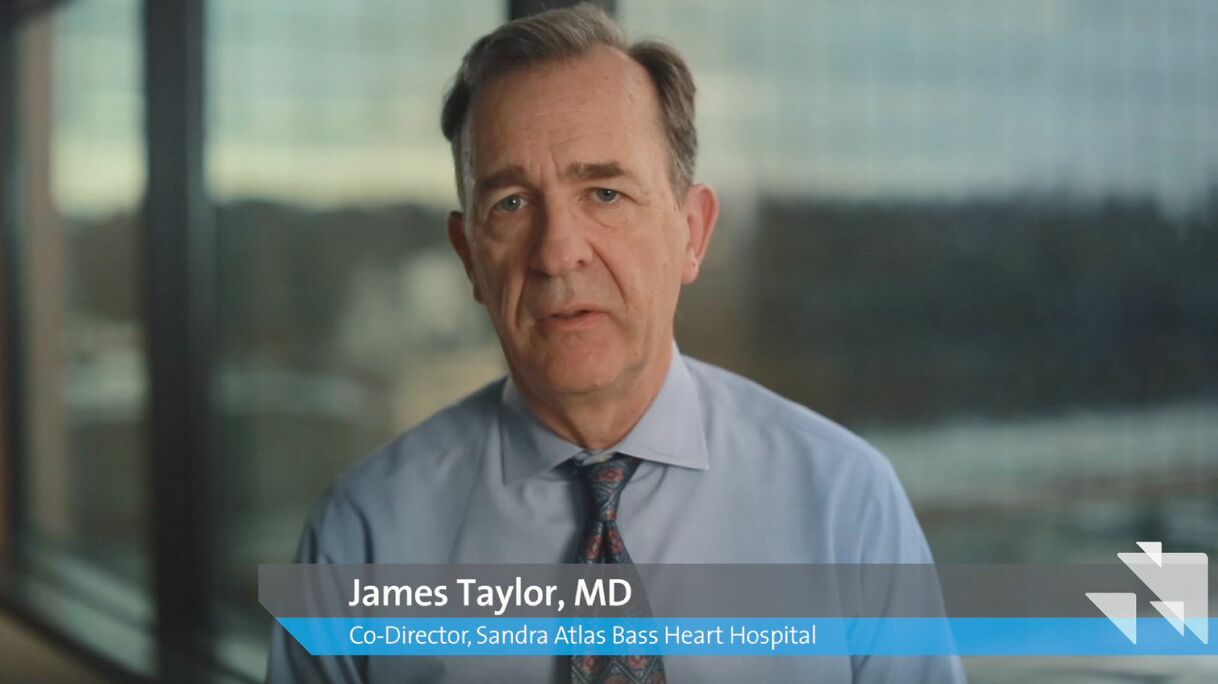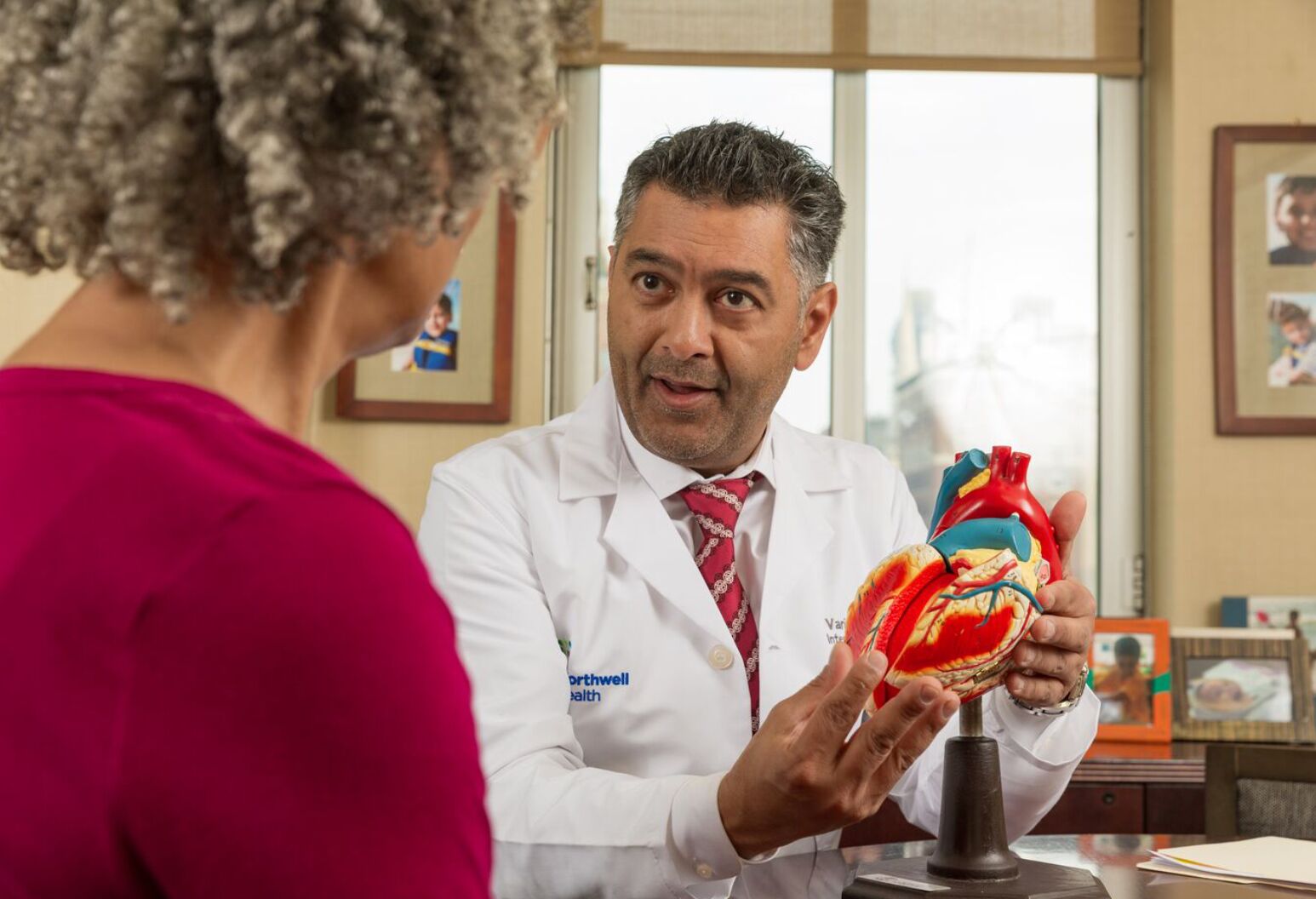Coronary artery bypass graft surgery
What is coronary artery bypass graft surgery?
Coronary artery bypass graft (CABG) surgery is sometimes used to treat coronary artery disease (CAD). CAD is the narrowing of the coronary arteries (the blood vessels that supply oxygen and nutrients to the heart muscle), caused by a buildup of fatty material (plaque) within the walls of the arteries. When plaque loosens and breaks off, a blood clot forms, which can block blood flow to your heart, resulting in chest pain or heart attack. If the blood flow cannot be restored to the particular area of the heart muscle affected, the tissue dies. If the blood supply to the heart muscle continues to decrease as a result of increasing obstruction of a coronary artery, a myocardial infarction (heart attack) may occur.
One way to treat the blocked or narrowed arteries is to bypass the blocked portion of the coronary artery with another piece of blood vessel. Blood vessels, or grafts, used for the bypass procedure may be pieces of a vein taken from the legs or an artery in the chest. At times, an artery from the wrist may also be used. One end of the graft is attached above the blockage and the other end is attached below the blockage. Thus, the blood bypasses the blockage through the new graft to reach the heart muscle.
Our approach
Over the past 10 years, Northwell Health’s facilities have consistently been ranked among the best in New York for quality outcomes in cardiac surgery. However, we weren’t satisfied with just being one of the best in the state—we’ve worked hard to become national leaders, as well.
We’ve received prestigious "Three Star" ratings by the Society of Thoracic Surgeons (STS) for excellence in coronary artery bypass surgery, positioning us as one of the top programs in the country for quality care. In addition, Healthgrades has named several of our hospitals as among the top in the nation for cardiac surgery and recognized us for superior outcomes in heart bypass surgery.
We’ve been ranked for high performance in our specialty for 2024-25 by U.S. News & World Report. We're proud to be awarded for our commitment to a higher standard of care.
Healthgrades has named several of our hospitals top in the nation for cardiac surgery. North Shore University Hospital is a five star recipient for coronary bypass surgery for seven years in a row (2018-2024).
Success statistics
Third-party organizations like the STS and the New York State Department of Health (DOH) are continually recognizing our programs for cardiac excellence.
In fact, for the seventh consecutive time, the DOH report has recognized our programs as having the state’s best outcomes for certain types of open-heart surgery. In their analysis, they looked at risk-adjusted outcomes and survival rates for patients undergoing surgeries for isolated coronary artery bypass grafting (CABG), the repair or replacement of heart valves, or both.
The STS has also developed a comprehensive quality rating system for cardiac surgery among hospitals across the country. In the current analysis of national data, several Northwell hospitals were awarded three stars and others follow with an also impressive “Two Star” rating for quality care.
Quality and outcomes
Outstanding care for exceptional results
Our cardiac services have been recognized by the New York State Department of Health and the Society of Thoracic Surgeons for excellent outcomes. That means you can rest assured that you—and your heart—are in good hands.
Risk factors
As with any surgery or procedure, possible risks are involved in coronary artery bypass graft surgery. These risks may be related to certain factors such as your age and current medical conditions. Speak with your doctor to discuss any possible risks and/or complications.
Types
We offer several different methods for coronary artery bypass graft (CABG) surgery. The type of operation your doctor recommends will depend on factors such as your age, the severity of your heart condition as well as any other medical conditions.
Regardless of the type of operation, you can rest assured that our surgeons are among the most experienced nationally in performing these procedures. There are many studies that show multiple arterial grafts improve survival with coronary artery bypass surgery. Whenever possible, our surgeons perform multi-artery grafting, with many of our institutions reporting usage above the national average.
Some of the procedures we offer include:
Traditional surgery (open-heart surgery)
With traditional surgery, the chest is opened and the heart is stopped for a time so the surgeon can perform the bypass. To open the chest, the breastbone (sternum) is cut in half and spread apart (sternotomy). Once the heart is exposed, tubes are inserted into the heart so that the blood can be pumped through the body by a cardiopulmonary bypass machine (heart-lung machine). This type of surgery involves making long surgical incisions down the inner thigh and/or calf to harvest veins to be used for bypassing the blocked arteries.
To sew the grafts onto the very small coronary arteries, the heart must be stopped to allow the doctor to perform the very delicate procedure. Tubes will be inserted into the heart so that the blood can be pumped through your body by a cardiopulmonary bypass machine. Once the blood has been diverted into the bypass machine for pumping, the heart will be stopped by injecting it with a cold solution.
When the heart has been stopped, the doctor will perform the bypass graft procedure by sewing one end of a section of vein over a tiny opening made in the aorta, and the other end over a tiny opening made in the coronary artery just below the blockage. If the internal mammary artery inside your chest is being used as a bypass graft, the lower end of the artery will be cut from inside the chest and sewn over an opening made in the coronary artery below the blockage.
You may have more than one bypass graft performed, depending on how many blockages you have and where they are located. After all the grafts have been completed, the doctor will examine them to make sure they are working. Once the bypass grafts have been completed, the blood circulating through the bypass machine will be allowed back into your heart and the tubes to the machine will be removed. Your heart will be restarted. Temporary wires for pacing may be inserted into the heart. These wires can be attached to a pacemaker and your heart can be paced, if needed, during the initial recovery period.
Off-pump coronary bypass
Off-pump coronary bypass (OP-CAB) is a form of coronary artery bypass graft surgery performed without cardiopulmonary bypass as a treatment for coronary heart disease. Rather than stopping the heart, you are given medication to slow your heart rate, which allows your surgeon to stabilize portions of the heart with a special type of instrument during surgery and bypass the blocked artery. This will be done by sewing one end of a section of vein over a tiny opening made in the aorta, and the other end over a tiny opening made in the coronary artery or internal mammary artery just below the blockage.
OP-CAB surgery may be performed in certain patients with CAD and for patients who are at increased risk for complications from traditional bypass surgery due to other medical conditions.
Compared to traditional CABG, OP-CAB offers the patient less risk for complications including:
- Bleeding
- Stroke
- Kidney failure
- Cognitive problems
Robotic minimally invasive direct coronary artery bypass (MIDCAB) surgery
Over the past decade, we have made great strides in developing minimally invasive approaches to coronary artery bypass graft surgery, including robotic procedures. With the assistance of the state-of-the-art da Vinci® robotic surgery system, a sophisticated surgical robot, our surgeons are able to perform the procedure without open surgery. Rather, it is performed through only a few small incisions and avoids the need for cardiopulmonary bypass machine, which stops your heart during surgery.
Robot-assisted surgery gives your doctor better vision and enhanced skills in the operating room. During the procedure, your surgeon remains in complete control, allowing hand movements to be replicated in smaller, more precise movement inside your body to successfully repair your heart. This advanced technology provides a 3D view inside your body and wristed instruments that bend and rotate far greater than the human hand for improved accuracy.
How to prepare
Your doctor will explain the procedure to you and offer you the opportunity to ask any questions you might have. In addition to a complete medical history, your doctor may perform a complete physical examination to ensure that you are in good health before undergoing the procedure. You may undergo blood tests or other diagnostic tests. Based on your medical condition, your doctor may request other specific preparation.
Notify your doctor if:
- You are pregnant or suspect that you are pregnant
- You are sensitive to or allergic to any medications, iodine, latex, tape or anesthetic agents (local and general)
- You are taking prescription or over-the-counter medications or herbal supplements
- You have a history of bleeding disorders or are taking any anticoagulant (blood-thinning) medications, aspirin or other medications that affect blood clotting
- It may be necessary for you to stop some of these medications prior to the procedure.
- Your doctor may request a blood test prior to the procedure to determine how long it takes your blood to clot.
- You have a pacemaker
- You smoke (you should stop smoking as early as possible prior to the procedure)
You should not eat for eight hours before the procedure, generally after midnight.
Recovery
Recovery from traditional coronary artery bypass graft surgery
Traditional surgery requires an in-hospital stay of several days or longer. The procedure may vary depending on your condition and your doctor's practices. Once you're at home, it will be important to keep the surgical area clean and dry. Your doctor will give you specific bathing instructions. The sutures or surgical staples will be removed during a follow-up office visit, if they were not removed before you left the hospital.
You should not drive until your doctor says you may. Other activity restrictions may apply. Your doctor may give you additional or alternate instructions after the procedure, depending on your particular situation. Notify your doctor if you experience any of the following:
- Fever and/or chills
- Redness, swelling or bleeding or other drainage from the incision site
- Increase in pain around the incision site
Recovery from MIDCAB surgery
Once the robotic surgery is complete, you will be moved to the recovery area to be monitored. You can expect a relatively short hospital stay to follow, usually half as long as following traditional surgery. Your doctors will typically discharge you once your pain is under control, you can retain liquids without nausea and vomiting and you pass a number of lab tests.
The following are some of the postsurgical benefits of minimally invasive robotic procedures:
- The less invasive nature of robotic cardiac surgery means that you can expect less scarring on your chest. Conventional heart surgery scars can be up to 10 inches; scars from robotic cardiac surgery are usually much smaller.
- Postsurgical pain also tends to go away much faster than with traditional procedures. After being discharged from the hospital, most patients can manage their pain with over-the-counter pain relievers like acetaminophen (Tylenol) or ibuprofen (Advil, Motrin).
- You may also return to normal activities more quickly than you would after conventional heart surgery. Most people can resume their normal activities after three weeks. Specific recommendations for activity will be provided by your doctor.
Be sure to notify your doctor immediately if any symptoms occur after the procedure, such as chest pain or discomfort. After robotic valve surgery, complications are rare but possible, so it is important to carefully monitor for any symptoms and report them to your doctor.
Results
Our cardiac services have been consistently recognized by the New York State Department of Health and the Society of Thoracic Surgeons for excellent outcomes. That means you can rest assured that you—and your heart—are in good hands.
Follow-up care
Cardiac rehabilitation
Our cardiac rehabilitation program helps people who are recovering from bypass surgery. Using the latest technological advances in cardiac rehab treatment, the department's staff of renowned cardiologists and cardiac rehabilitation specialists provides safe and effective treatment plans that are individualized to each person's physical condition and treatment goals.
The program includes:
- Medical supervision to improve the health and well-being of people who have heart problems
- Exercise training, education on heart health and counseling to reduce stress
- Customized programs designed for each person for a period of 12 to 36 weeks
- Convenient morning and afternoon sessions
Follow Your Heart program
The first of its kind on Long Island, our unique Follow Your Heart program offers home visits to patients after they have heart surgery—because your health is our top priority, even after you leave the hospital.
A specially trained nurse practitioner or physician assistant from your original treatment team will visit you to make sure your recovery is going smoothly in the days and weeks following discharge. They will examine you, take your blood pressure and vital signs, and review and adjust your medication if necessary.
Support groups
After your discharge from the hospital, you and your family are encouraged to attend our ongoing educational programs and support groups. Topics are designed to help you return to your daily activities and maintain a heart-healthy lifestyle. For information on patient education and cardiac support groups, call (516) 562-8410.
In addition, we connect patients with organizations managed by others who have experienced cardiac surgery. The following organizations are able to provide additional support:
Mended Hearts, Inc./Mended Little Hearts: a national and community based organization that provides individuals who experienced heart surgery or heart disease an opportunity to encourage and support patients with similar conditions. The Mended Heart volunteers conduct hospital visits while a patient recovers, online check-ins and additional support through phone conversations.
WomenHeart is a national coalition for women with heart disease that provides educational information, support and additional services.





